So far, I’ve been here for 23 days, and I’ve experienced quite a whirlwind of events.
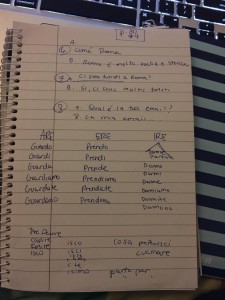
Italian Notes | Photo credit: Rena Kassak
Since I’ve last written, I’ve gotten into the thick of my classes and have fallen in love with the staff of ISI Florence. Professors here are a bit more laid-back than in the States. Our Italian Language teacher ensured us that we’re on the same level, and he made sure that we know we can go to him for help with anything at all during the semester! From my past experiences with college, which I carry solely from the U.S., this hasn’t always been the case. His heart is focused on helping us learn, and the same goes for my photography professor. Put simply, ISI Florence is taking absolute wonderful care of us!
Learning the language
I’m in love with the language here. It’s so beautiful. Today we engaged in conversations with four Italian speaking 20-somethings who visited our class; it was kind of like speed-dating! I speak “un po” (only a little!) Italiano, and they could speak a little bit of English. It was neat to see how well we could communicate.
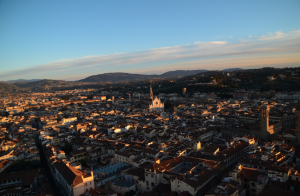
View of Florence from the top of the Duomo!
Also, last week, I met up with a Florentine girl named Sara. We met through a language exchange website. She loves traveling and learning languages, and she studies English, French, Spanish, and Chinese. It was so lovely to meet her and to learn about Italy from her perspective! I very much enjoyed our conversation, which was mostly in English seeing as she speaks English better than I can speak Italian. And, not to mention, I am still a bit shy! (“Sono un po timida”)
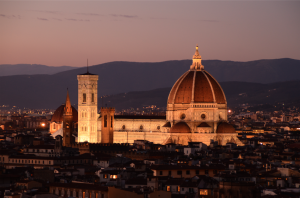
A view of the Duomo from Piazzale Michelangelo – In the last photo, I was looking out from the tippy top of this one.
We talked about the differences between Italian boys and American boys, indulged each other with stories of our past relationships, and bonded over a love of purity. She also taught me some slang words in Italian, like “figo,” which means beautiful but is used how we would use the word cool, and also its synonym: “ganzo,” which is only characteristic of Florence.
Wine tasting in Chianti
On a school trip to Chianti, we met Gino, a family-oriented man, who showed us the “sweetness” of life. The Italians’ mentality is much different than what’s common back home.
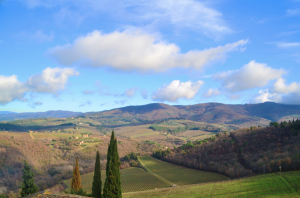
A view of Chianti from Gino’s vineyard
“There’s no food without wine and no wine without food,” he said. Gino also emphasized the joys of taking things slow and really enjoying everything with all of our senses as not to get drunk but to enjoy the wine. “Wine is everything,” he said, it’s even where you are and the people you are with; “wine is life.” He advised us to drink good wine with good friends, and warned us to never drink alone. He also taught us that just because a wine is expensive, that doesn’t mean it’s a good wine! It could just mean that it comes from a very small vineyard. The only way you can tell if a wine is good is “with your eyes, your nose, and your mouth.”
Adventures in Siena
Last Saturday, I visited Siena! Signing up for the trip by myself, I wasn’t sure I’d know anyone there, however, a stellar group of kids, Heather, Brian, and Nick (Nick, who is actually in my buon fresco class) were there!
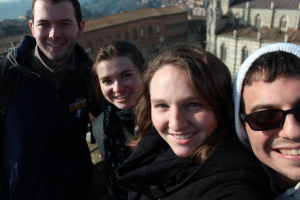 I had an amazing time spending the day with them enjoying the city view from atop the Cattedrale di Siena, stopping for gnocchi and “picci,” a thick pasta prized by Siena, and visiting the Church of Saint Dominic where we found the relic of Saint Catherine of Siena. It was so awesome to learn about her life right in her home city! Apparently people were drawn to her, and it’s no wonder since she was so drawn to Christ! Later that day, we ventured over to San Gimignano, a small medieval town with an incredible view that I could have easily mistaken as a painting had we been inside!
I had an amazing time spending the day with them enjoying the city view from atop the Cattedrale di Siena, stopping for gnocchi and “picci,” a thick pasta prized by Siena, and visiting the Church of Saint Dominic where we found the relic of Saint Catherine of Siena. It was so awesome to learn about her life right in her home city! Apparently people were drawn to her, and it’s no wonder since she was so drawn to Christ! Later that day, we ventured over to San Gimignano, a small medieval town with an incredible view that I could have easily mistaken as a painting had we been inside!
V for Venezia!
Then, of course, there’s the gorgeous city of Venice! With its waterways instead of streets and boats instead of cars, Venice is one of the most quirky places I’ve visited. We were able to catch the parade where the floats were literally floating (boats, of course!) And, we enjoyed what the Venetians call the Carnevale.
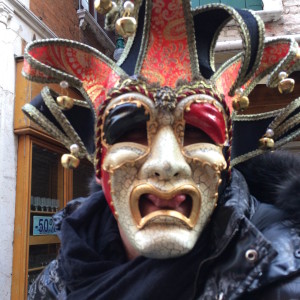
People wear all kinds of fun masks during the carnival!
Venice is quite touristy, and I’d suggest going later on in the week to witness the carnival in full effect. We were unaware of this, and we actually made plans with a tour group in advance. The skies turned out to be overcast, and it was only the first day of the carnival–much too soon for the fun to pick up!
Although I met some great people on the bus, I ended up spending most of the day by myself. But, on the bright side, I got to check out the Chiesa di Santa Lucia, a church by the grand canal, where I saw the relic of Saint Lucy’s incorruptible head and visited the Blessed Sacrament of our Lord in a side chapel.
I actually didn’t get to go to mass on this day (Sunday), which was pretty upsetting to me. It was mainly poor planning. I’m still figuring out how to adapt to this life on the road because, at least at this point in my life, it’s so easy for me to get distracted. But, truly God is the most beautiful!
The not-so-wonderful truth
Although the travel life can seem romantic and glamorous from stories and photographs, I’ve been here for less than a month and as you can tell, I’ve already experienced a few bumps along the road.
-

Crepe and waffle alla nutella date in between classes! I don’t know how we made it through Italian class after this! Photo credit: Rena Kassak
Pro tip: If you ever go to Italy please, please drink tons of water, and be weary of your dairy intake! I absolutely love picking up new foods from the market, especially cheese because it’s fresh, inexpensive, and we’re in Italy! So, why not try them all? (“perchè no?”) Well, just recently, I learned the hard way… that too much cheese and other dairy foods, like gelato, can actually cause constipation. (“Come sei dice embarrassing?”) Fortunately, a call home to mom, some prune juice, and laxatives really did the trick! Thank God!! I had no idea how painful that could be!
- Next? Well, I lost my cell phone one evening when taking out the trash. I would have gone diving in after it!!! But, the trash disappeared into the ground. They have some clever dumpsters here, and I didn’t even feel my phone slip out the moment it happened…
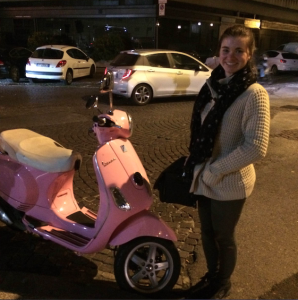
Is this not the most beautiful motor vehicle you’ve ever seen?! Spotted near Firenze S.M.N. train station.
Since the garbage company was already closed for the night, we had to wait to call in the morning. At this point, it was already compacted into a teeny tiny cube. I was able to communicate with my family and friends online, and my parents had mercy on me. Fortunately, I was able to replace the phone, and everything is semi-back-to-normal, if you can even call it that.
Despite the appealing aspects of travel, it definitely has its fair share of adjustments, ups, and downs (and there are even more if you’re clumsy!), but every single one of these has come and gone, and it continues to amaze me that I am actually here… Praise you, Jesus! And, thank you, Mom and Dad!
Next stop… Roma!
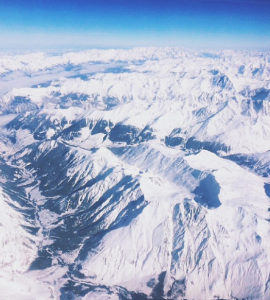 I thoroughly enjoyed seeing Geneva and their home, flying over the Swiss Alps on the plane ride there, and then again gaping at the view of the Alps through their kitchen window! Unbelievable.
I thoroughly enjoyed seeing Geneva and their home, flying over the Swiss Alps on the plane ride there, and then again gaping at the view of the Alps through their kitchen window! Unbelievable.









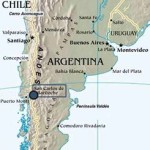

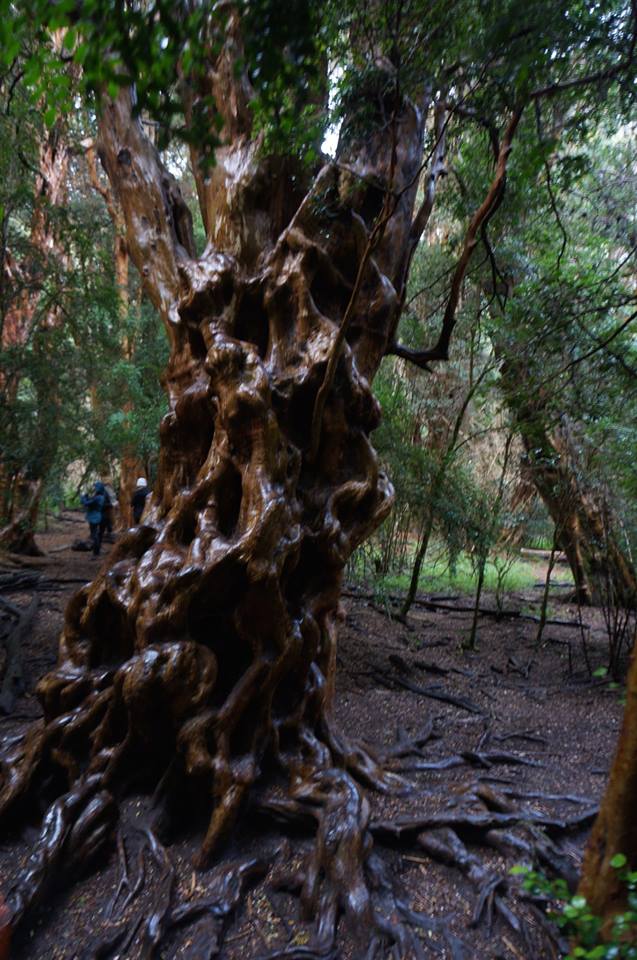

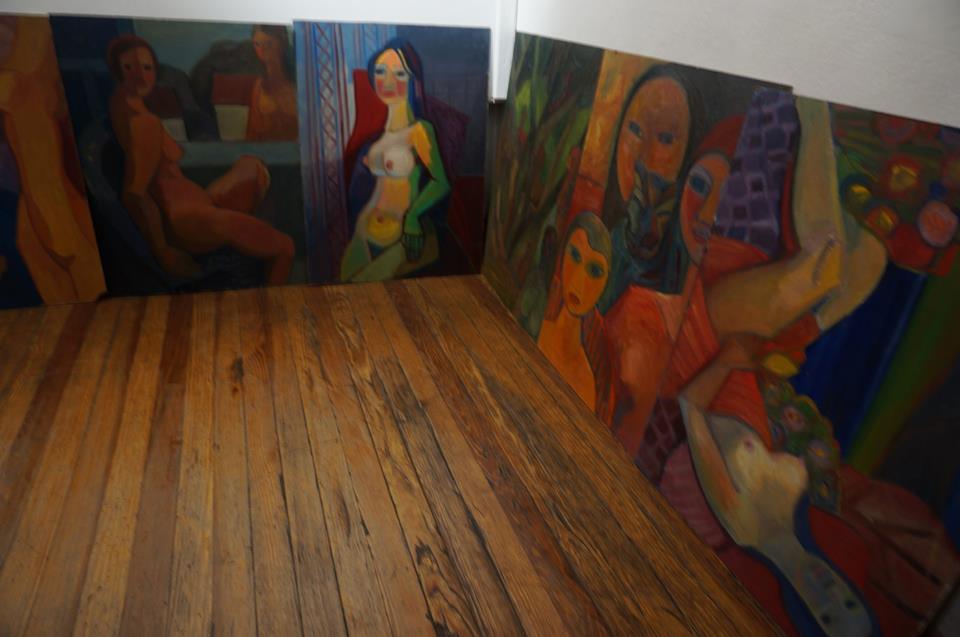

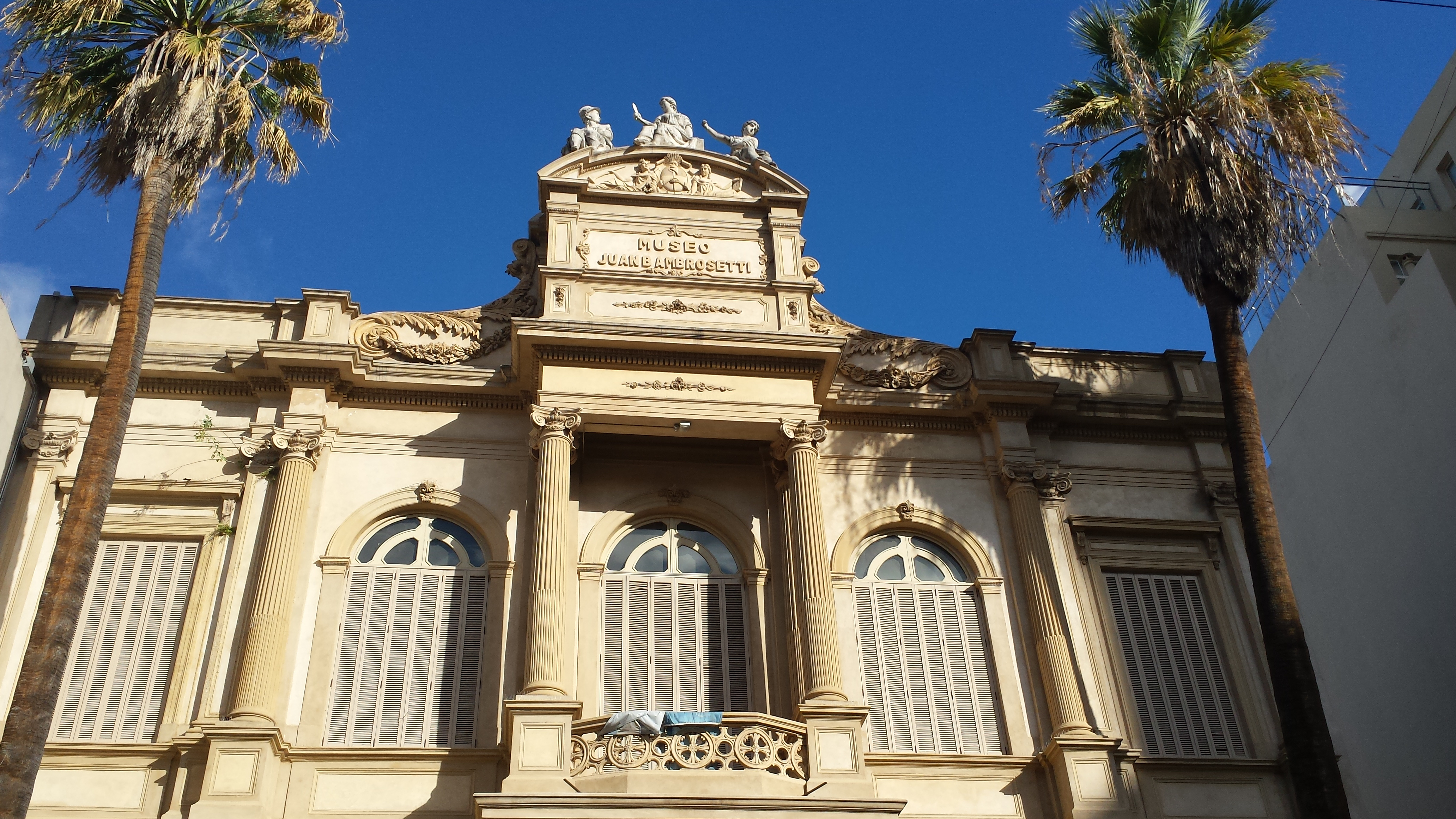
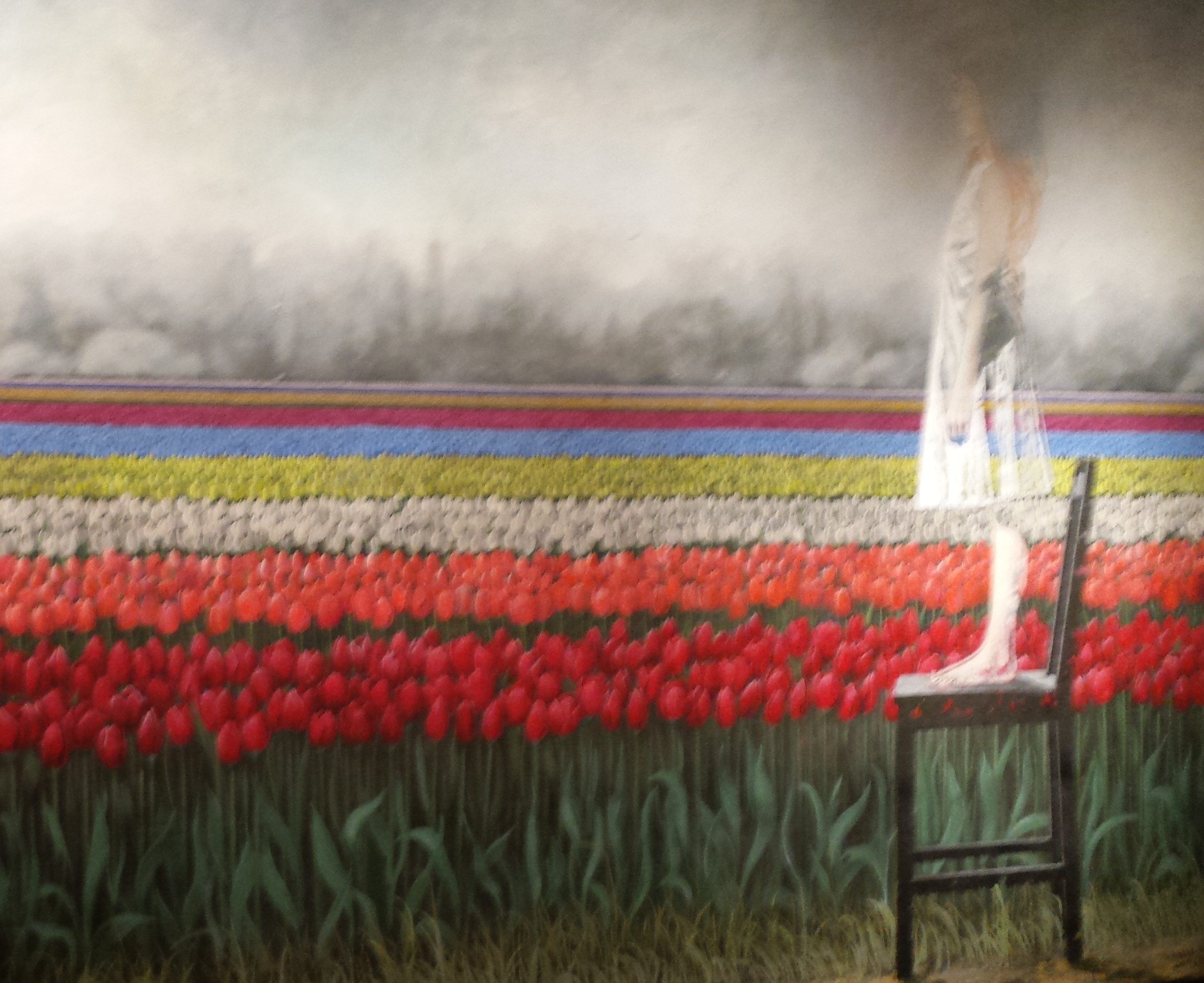
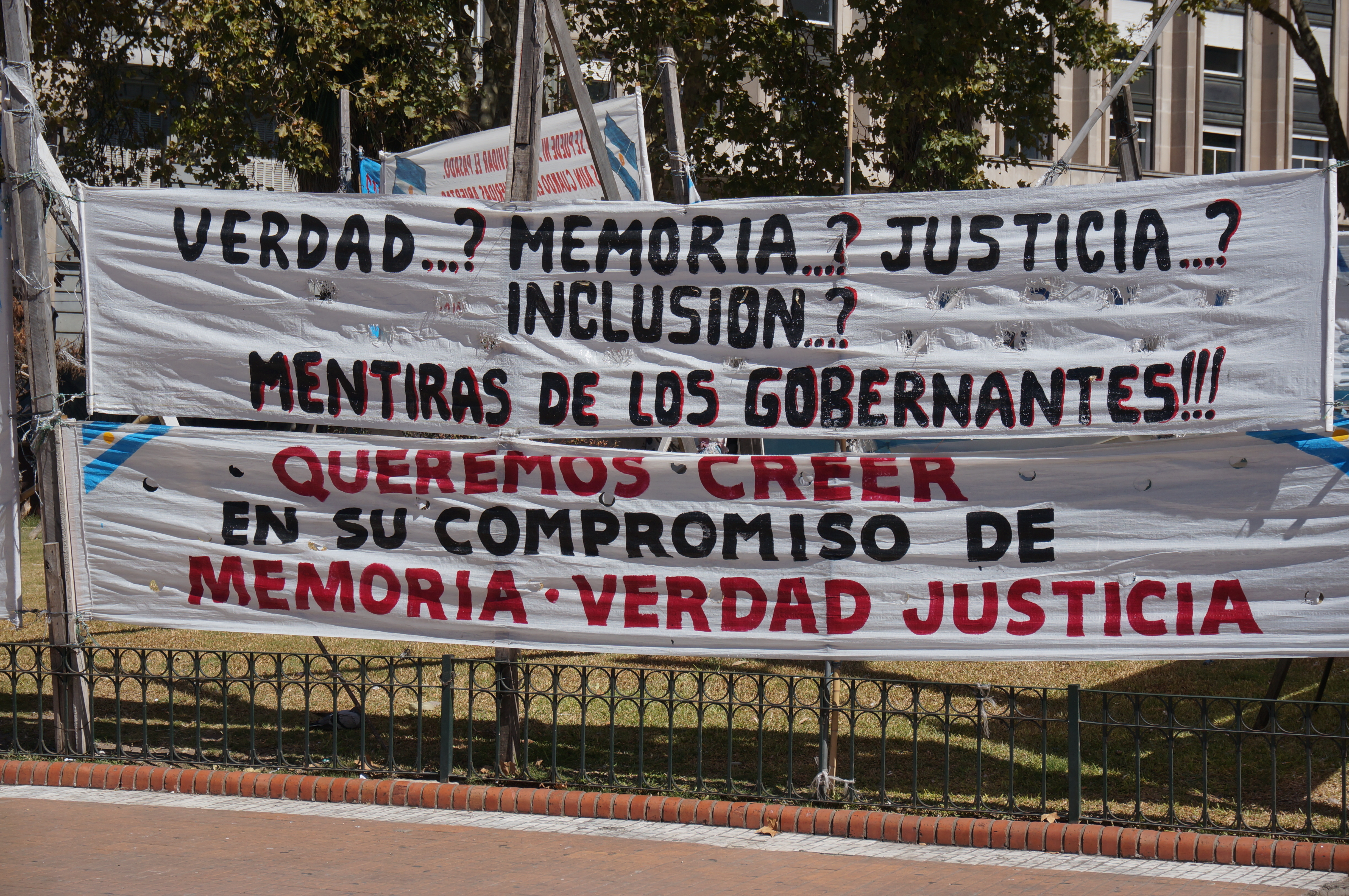



![IMG_1379[1].JPG](https://geoblog.psu.edu/wp-content/uploads/sites/12412/2014/06/IMG_13791-thumb-400x300-401829.jpg)
![Thumbnail image for IMG_0977[1].JPG](https://geoblog.psu.edu/wp-content/uploads/sites/12412/2014/06/IMG_09771-thumb-400x300-401755-thumb-500x375-401756.jpg)





